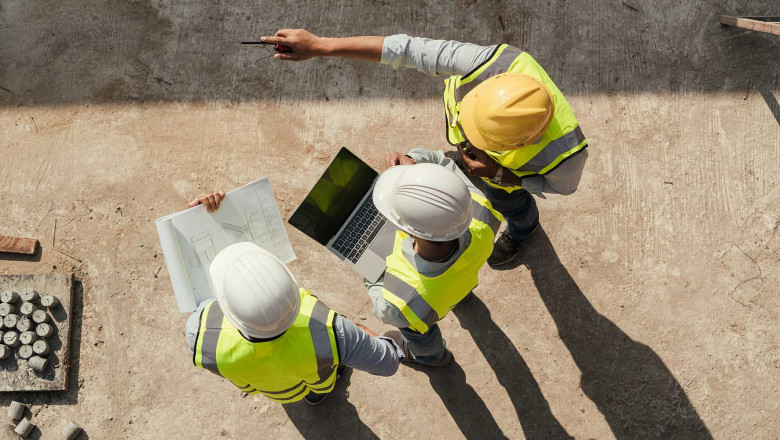views
Construction projects, whether large infrastructure undertakings or smaller residential developments, are essential for urban growth and progress. However, alongside their many benefits, these projects also bring potential hazards—not just for workers, but for the surrounding community. Public safety can be compromised by heavy machinery, traffic disruption, noise, dust, and even structural risks. Therefore, ensuring the safety of nearby residents, pedestrians, and road users must be a top priority for every construction project.
Community safety isn’t just about legal compliance—it’s about trust, transparency, and responsible development. When the public feels protected and informed, the relationship between construction companies and local communities thrives. Here's how construction projects can minimize risks to the public and maintain a strong safety culture outside the site boundary.
1. Comprehensive Risk Assessment and Planning
Before any work begins, a detailed risk assessment must be carried out—not only for the worksite but for surrounding public spaces. This includes evaluating pedestrian routes, local traffic patterns, schools, businesses, and residential areas that may be affected.
Effective planning can help identify hazards like falling debris, blocked pathways, and reduced visibility for drivers. Once risks are assessed, a mitigation strategy should be developed that includes clear safety zones, pedestrian diversions, protective barriers, and communication plans.
Early and thorough planning is crucial for preventing avoidable accidents and ensuring that public safety is embedded into the very foundation of the project.
2. Site Security and Physical Barriers
Securing the construction site with proper fencing, signage, and controlled access points is fundamental. Unauthorized access can lead to serious injuries or vandalism, especially in urban areas where children or curious individuals might enter out of interest.
Solid hoardings or mesh fencing should be erected around the entire perimeter, with clear warning signs that indicate dangers such as "No Entry," "Hard Hat Area," or "Heavy Machinery in Operation." Temporary pathways should be well-lit, properly signposted, and free of obstructions to guide pedestrians safely around the site.
In particularly busy areas, using transparent panels in hoardings can reduce anxiety by allowing the public to see through without compromising safety, helping them feel less enclosed or confused.
3. Traffic and Transport Management
Construction traffic can pose a significant hazard to the public, especially when large vehicles are entering and exiting sites in pedestrian-heavy zones. A robust traffic management plan is essential and should be coordinated with local authorities to reduce congestion and confusion.
This plan may include designated delivery times to avoid rush hours, traffic marshals to guide vehicles and pedestrians, and temporary traffic lights or crossings. Cyclists and wheelchair users should also be considered when planning detours or access routes.
In residential areas, it's particularly important to maintain access for emergency services and reduce noise and disruption as much as possible during peak hours.
4. Air Quality and Noise Control
Construction activities often generate dust, debris, and noise—all of which can affect nearby homes, businesses, and public spaces. Mitigation measures such as dust suppression systems (e.g., water spraying), noise-reducing barriers, and using quieter machinery can greatly reduce the impact on the community.
Scheduling loud activities during daytime hours and providing advance notice to nearby residents also helps maintain goodwill. In sensitive areas like schools or hospitals, extra consideration and communication are crucial.
Monitoring equipment can be installed on-site to track air quality and noise levels, ensuring they stay within acceptable limits and giving the public confidence that their health and comfort are being protected.
5. Community Engagement and Communication
Keeping the public informed is one of the most powerful tools for ensuring safety and building trust. Clear signage around the site explaining what work is being done, who to contact with concerns, and how long it will take can help ease frustration and confusion.
Regular updates—via leaflets, websites, or social media—can also help keep residents informed of changes in traffic flow, work schedules, or utility disruptions. Hosting community meetings or consultations before and during the project gives locals a voice and allows concerns to be addressed in real time.
Good communication not only reduces misunderstandings but also empowers the community to stay safe and informed throughout the project lifecycle.
6. Prioritizing Local Initiatives and Standards
Adhering to national and regional safety standards is a must, but local initiatives and policies should also be considered. In regions like Health and Safety Hampshire, for instance, construction companies are encouraged to align their safety practices with local frameworks that address both workforce and public protection. This alignment helps ensure that site operations are consistent with community values and expectations, and that projects contribute positively to the wider health and safety culture in the region.
7. Training and Accountability
Every team member on-site must understand the importance of public safety. Regular training sessions should not only cover personal and site safety but also emphasize the responsibility workers have to protect those around the site.
Supervisors and safety officers should be clearly designated to monitor community-facing aspects of the project, respond to incidents quickly, and ensure that procedures are being followed properly.
Creating a culture where everyone feels accountable for public safety helps prevent complacency and keeps the focus where it belongs—on protecting lives and property.
Conclusion
Community safety is a shared responsibility that extends beyond the construction site fence. By prioritizing risk assessment, secure perimeters, clear communication, environmental controls, and local partnerships, construction companies can greatly minimize the impact of their projects on the public. As cities continue to grow and infrastructure needs expand, embedding public safety into every stage of construction will remain essential—not just for compliance, but for earning the trust and support of the communities they serve.






















Comments
0 comment